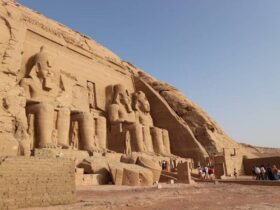Conducting the next excavations in the north of Peru, a group of archaeologists discovered the tomb of the UARI Indians, which no one had previously touched. Valuable opening belongs to researchers who worked under the leadership of Milos Hertz, an experienced Polish archaeologist. The tomb with 1.2 thousandth history has kept a huge amount of artifacts all these centuries, including precious metals (silver and gold). Scientists have found more than a thousand subjects, among which there were vases, axes, jewelry. However, the most valuable in this find were the mummies of the queens and the remains of 60 people who were in the discovered tomb.
Among the found remains, most of the skeletons belong to women. According to researchers, women were sacrificed after the death of their lords, as evidenced by their sedentary poses.
Scientists suggest that the discovery made will help to close the life of the ancient Uari, who lived and Andes even before the well -known civilization of the Incas appeared there.
Wari (according to some sources of Vari) is an Indian culture that belongs to the Dinsky period. It existed in the period from 500 g. BC.e. up to 900 g. Our era in the central Andes on the central and southern coast of the territory of modern Peru.
Earlier, the Egyptian archaeologists managed to find a huge necropolis: 57 ancient tombs located near Cairo contained wooden sarcophagi with mummies. The analysis made it possible to establish that the date of the oldest burials was 2750 g. BC.
The mummies found were representatives of the XVIII dynasty, which in the second millennium BC rules ancient Egypt. All mummies were covered with special canvases that adorned the images of the ancient Egyptian gods, as well as religious texts from the book of the dead. The date of the remaining 30 tombs was the period from the end of the II – beginning of the first millennium BC. It turned out to be very valuable that the tombs found in inviolability have survived to this day. The study of mummies and funeral paraphernalia will allow one step to advance in the disclosure of the history of our ancestors.












Оставить коммент.